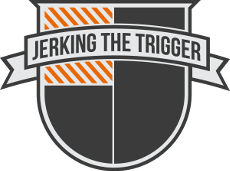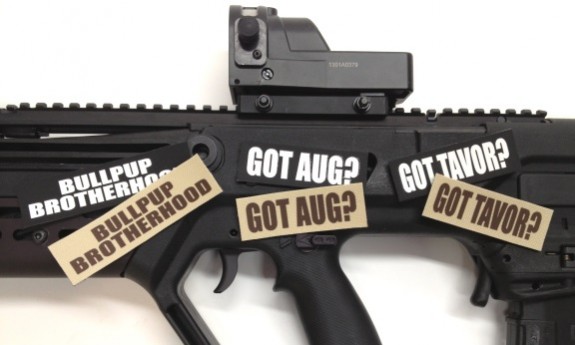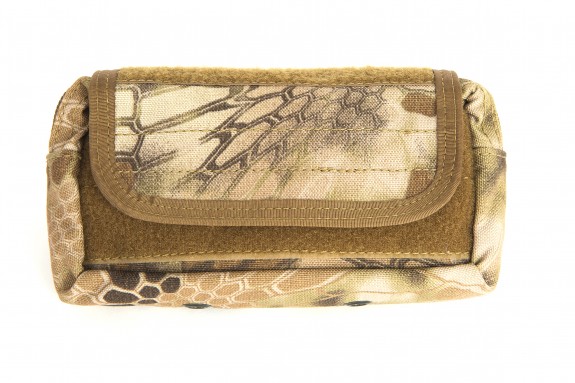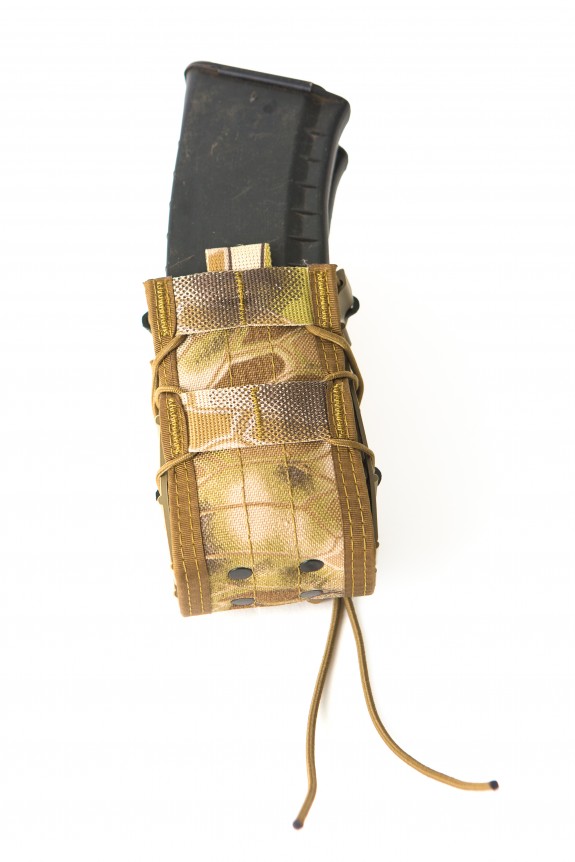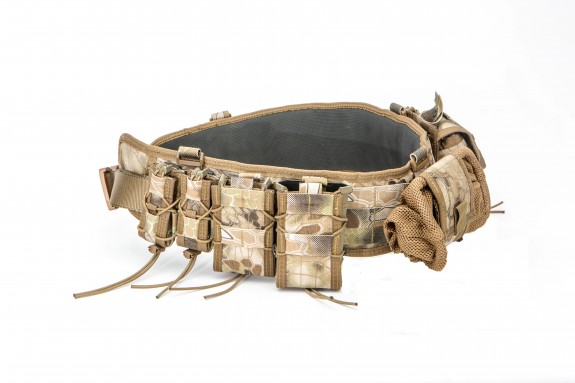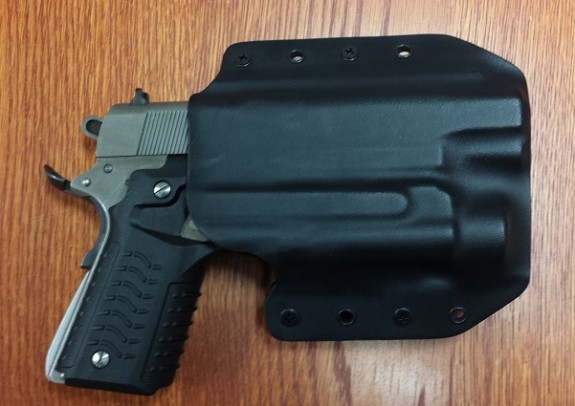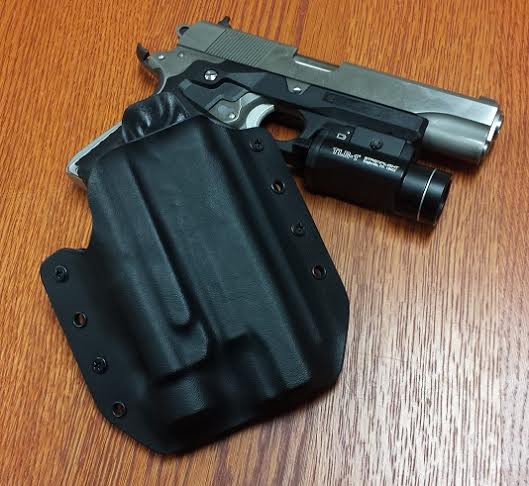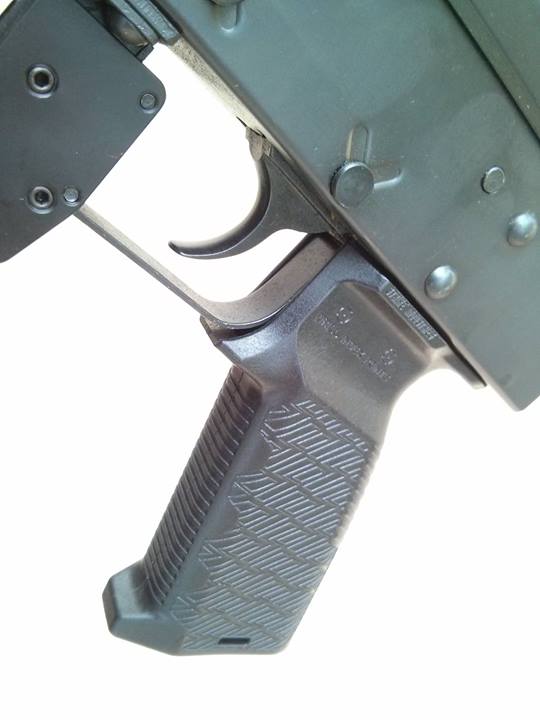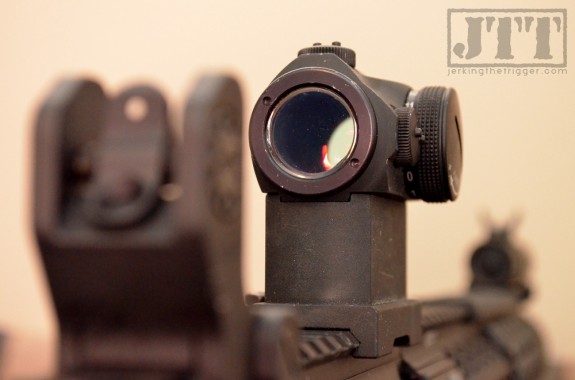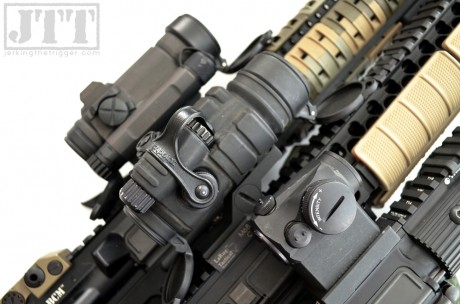The bullpup crowd tends to be a pretty tight knit group that is united by their appreciation of a unique rifle design. If you consider yourself part of that crowd, you’ll love these new patches from Manticore Arms.
Archive | March, 2014
High Speed Gear Adds Kryptek Highlander
High Speed Gear is now offering Kryptek Highlander as a limited time option on some of their most popular products. The
entire line of modular TACO pouches, Sure-Grip Padded Belt, M3T, and many more will feature the Kryptek Highlander pattern with matching webbing.
LAG Tactical Holsters for the Recover 1911 Grip and Rail
I recently covered the release of the Recover Tactical Recover Grip and Rail for the 1911. It used to be that when something like this came to the market, you had to sort of sit back and wait to see if holster makers would support it. That process happens much faster now with the proliferation of Kydex benders around the country and the internet to keep everyone in the loop.
LAG Tactical has already stepped up to offer holsters for the Recover Grip and Rail. I have been using one of their holsters for quite a while now and I am very pleased with it. I think it is pretty cool how quickly the gun world moves these days.
Strike Industries AK Grip
Strike Industries is working their way closer to releasing an AK grip. They released an image of the mold sample and, while details are sparse, it is a good looking grip. Interestingly, it has cutouts for a storage compartment but there are no plans to create a cap for it at this time.
Sharpen Your Red Dot
I have written before about how the aiming dots on some Aimpoints don’t always look very crisp to my eyes. Yet, I continue to use them because they are clearly the best red dot site on the market. The Aimpoint Micros (T-1 and H-1) in particular appear more like a starburst than a dot to me. This makes accurate shot placement challenging especially as the distance from the target increases. I continue to use them in spite of all that because of their amazing combination of compact size, light weight, long battery life, and extreme durability. Well, that and I have a work-around.
I am certain that it is not unique or original to me but I have found a simple work-around for the issue that works very well for me. I simply look at the aiming dot through the small aperture of the rear sight when precision is needed. Looking through the small aperture makes the dot in an Aimpoint appear perfectly round and crisp and it also seems to bring the target into the same plane allowing both the dot and the target to be relatively crisp. There is obviously some principle of light or vision at play here that is beyond my ability to explain. Go try it now and you will see what I mean. I’ll wait…
This isn’t a perfect fix and it isn’t for every situation. It might require some adjustments to your carbine and may not be for everyone.
When to Look Through the Rear Aperture
This is obviously not a technique that is applicable to all situations. I find that there is really no need to do it until distances extend beyond 100 yards. You certainly would not want to spend time finding your sight picture through the small aperture if you are engaging a bank of targets that are just 25 yards away. There is really no need to because even if the dot is slightly misshapen to your eye, it still probably offers an acceptable level of refinement for this task.
To be clear, I am not advocating that you always look through the rear sight when using an Aimpoint. The approach that works for me is simple: I look through the rear sight only when time allows and/or the accuracy requirement of the shot requires it.
How to Configure Your Carbine
I am not sure there is a hard and fast way that your carbine must be configured for this to work though I have found that there are probably some best practices. For instance, I don’t think it is a good idea to have to deploy a folding rear sight in order to look through the small aperture. This is doubly true for sights that do not deploy with the small aperture in place. I keep my rear sight in the up position to avoid this.
I find that I prefer a lower 1/3 co-witness setup in general but it also happens to be well suited to this technique. It allows me to easily look over my deployed rear sight while maintaining a normal cheek weld when the need for speed is more pressing than the need for a sharp, crisp aiming point. When I need that crisp aiming point, I simply press my eye down to the iron sight.
I should probably also note that I still keep both eyes open when using this technique. I find that my brain can switch to the clearer view through the rear aperture fairly intuitively. This principle should be easy for those who are already used to using magnified optics with both eyes open.
Wrap Up
I want to reiterate again that I am not advocating always looking through the rear sight when using an Aimpoint and I am not saying that it is necessary to look through the sights to use an Aimpoint (this misinformation seems to come up time to time). This is simply a technique that works for me when the specific set of circumstances that allow it arise. Try it sometime.
